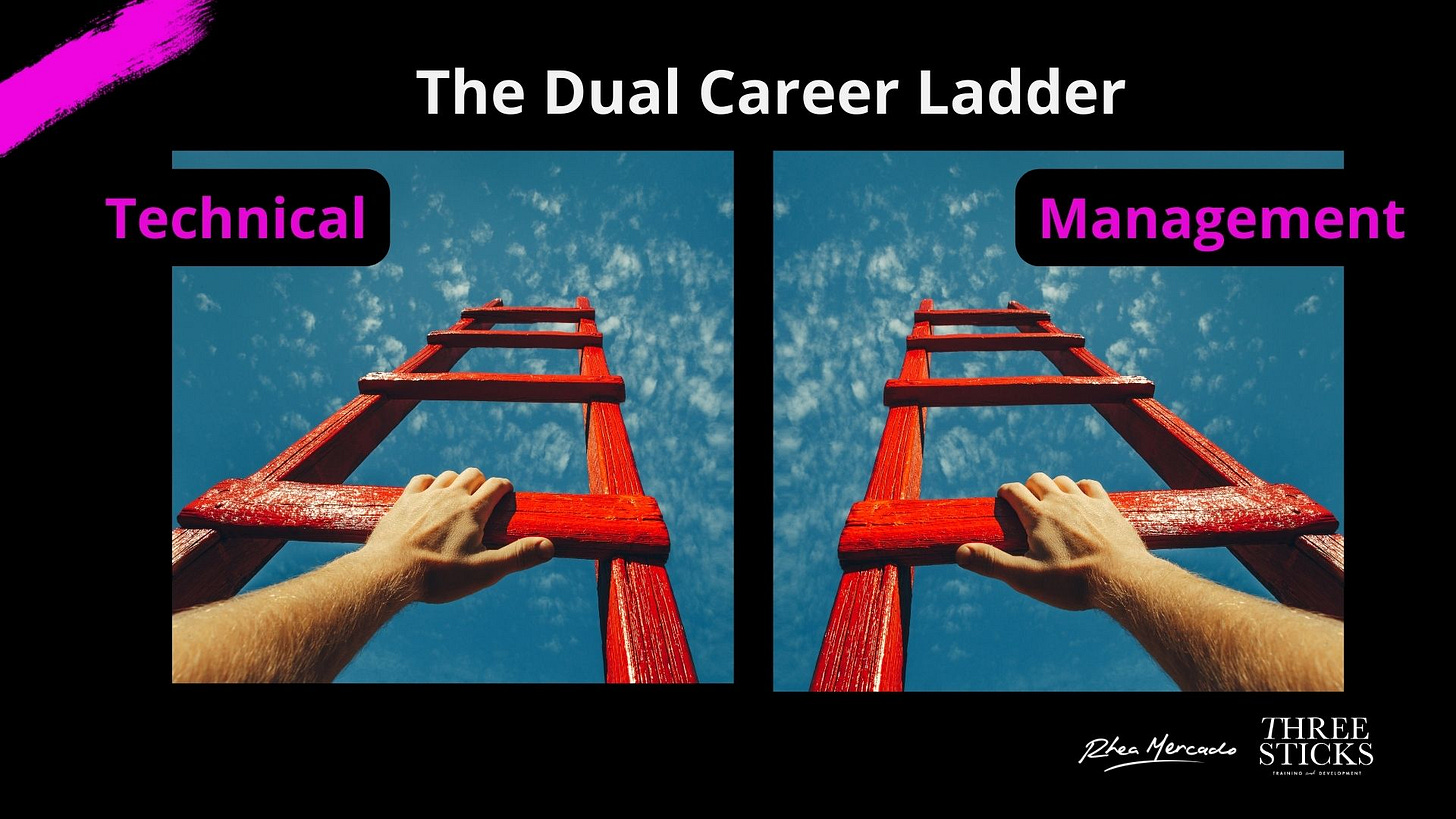002: Embrace the elder rehabbers
The one thing we could do to pass on our elder rehabber knowledge.
Howdy Folks,
Big tech businesses uses a promotional structure which rewards both technicians and managers. Building parralel models of promotion.
In speaking with my healthcare and rehab peeps, it dawned on me that the only way to earn a promotion and a higher salary, was to move into management.
I’ve tried being a manager, and in balance, I think I did okay. No doubt, however, I did some shitty things and made some shitty and unfair decisions, and I’m sure there were instances when I could’ve handled things a bit better. I mean, like the time we were locked out of the clinic, allowing two of the beef-cake EPs to build a human ladder and hoist each other up onto the second storey balcony wasn’t exactly sound decision making. Much love to FR and CM. 💪
Also, the time I reprimanded a junior because she forgot to shake hands with a client when she introduced herself. That was a crap thing to do, and I’m very sorry about that.
The thing is, I never really enjoyed being a manager. I was (and still am) a great techinician, I’m a bloody fantastic rehab consultant, and being a technician is my happy place. Unfortunately, I’m unemployable. For me to earn a salary equivalent to a higher level manager, I would have to be, well, a higher level manager. And I have yet to find a company who will offer me that type of salary in a role which is typically seen as entry level.
My story is not unusual. Often, I speak with other injury management and rehab elders who have turned to contracting because it’s the only way we are able to earn the higher end moolah, and continue to be just technicians. We don’t want to manage people, we don’t want to be team leaders, we don’t want fancy titles. Just leave us alone, give a case load and we’ll get shit done. Like, properly done. 👊
At the Australian Rehabilitation Providers Association (ARPA) National Conference in 2022, I proposed the Dual Career Ladder. Instead of one promotional pathway, there are two - Technical and Management.
Already being used in the science, engineering, big tech industries, the dual career ladder would work wonderfully in healthcare, rehab and injury management. How? In theory, consultants would have a choice to climb one ladder without compromising seniority, pay and the coveted promotion. The dual career ladder motivates employees to specialise and build skills in their areas of interest knowing that there are multiple pathways to promotion.
The “Technical Ladder” would reward and promote high performing consultants as they gained experience and skills, and autonomy. The “Management Ladder” would reward any consultant who showed the skills and aptitude for management regardless of their technical skills.
Another benefit to the dual career ladder is it creates diversity in perspectives and in knowledge exchange across the organisation. Junior staff are empowered to approach both their managers and consultants who are higher on the ladder for support and advice.
With so many companies offering graduate programs, it vital for junior staff to have access to both mentoring and performance management. Because, even with the most well-intentioned training systems, it is intimidating for a new grad or junior to ask their manager for advice or admit when they have made a mistake.
Those on the technical ladder would inevitably also rise to the role of company elder, the wise, confident mentor and sponsor. The dual career ladder gives them the opportunity to pass on their knowledge and experience without the formality of the traditional management structure.
Finally, let’s not forget, elder rehabbers are bad-asses. I’ll just leave this here…
Cheers for now, -Rhea. ✌🏽
P.S. there is research around this area of dual career paths and dual career ladders. Just Google it, Bing it, or ask ChatGPT.





